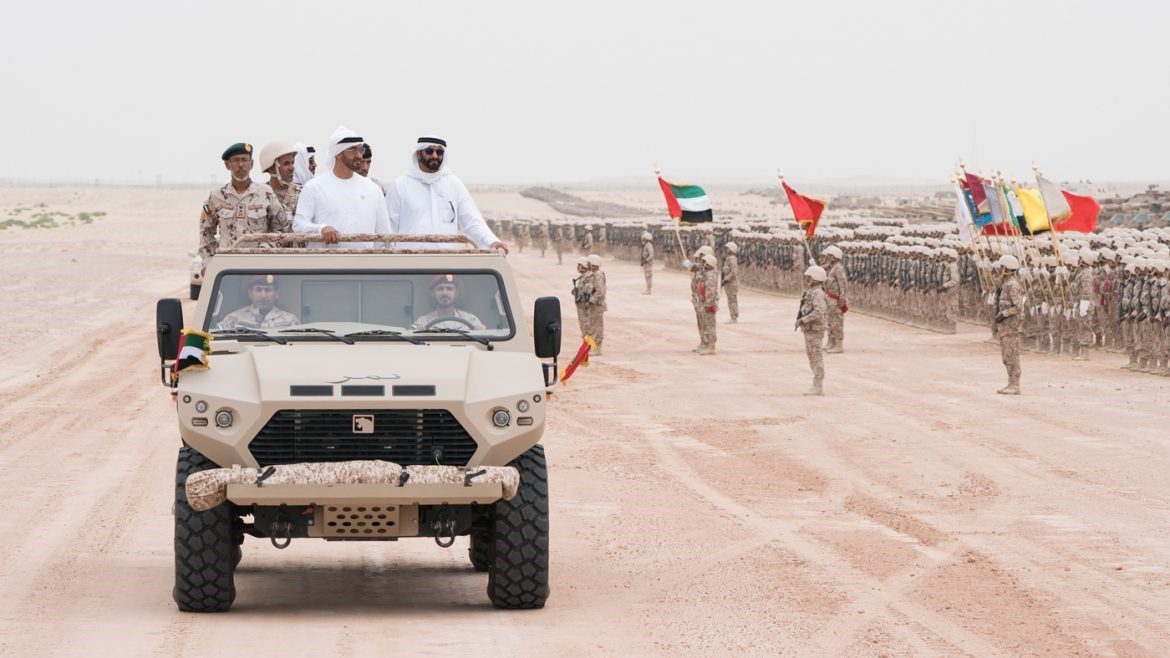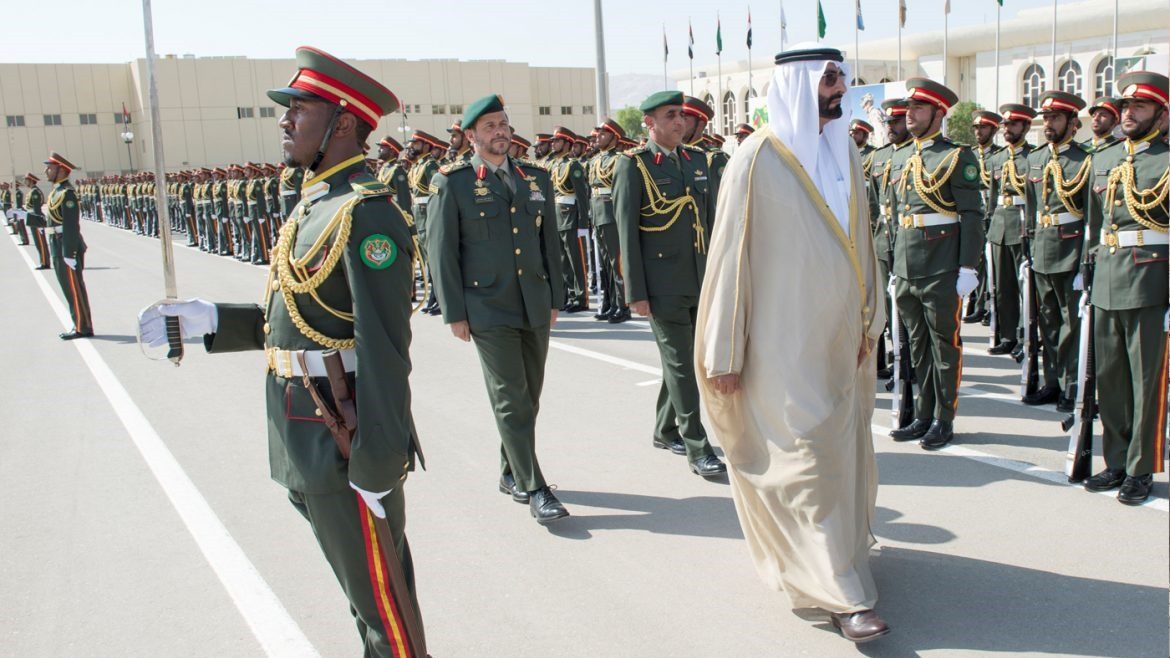Western allies have given Kyiv the green light to strike deep into Russian territory using advanced Western missiles like the “ATACMS.” In response, Russia deployed a hypersonic missile, the “Oreshnik” (Hazelnut Tree in Russian), targeting vital infrastructure in the city of Dnipro, central Ukraine.

Notably, American and Western air defence systems have no defence against this type of missile. In this context, Russian President Vladimir Putin has issued a stern warning, suggesting that Russia could retaliate against countries supplying weapons to Ukraine for attacks on Russian soil, in a clear reference to the United States, France, and the United Kingdom.
Moreover, Putin stressed that any escalation would be met with proportional force. Russia’s use of the ballistic missile serves as a military signal or threat to convey specific messages through calculated military actions. This analysis seeks to decode the messages Moscow intends to send to Ukraine and the West, by first clarifying the concept of military Signaling and its primary forms.
Defining Military Signaling and Its Forms
Although the term “Signaling” is frequently used in military studies, most do not offer a concrete definition. However, some political studies define Military Signaling as “the strategic revelation of information about intentions, resolve, and/or capabilities aimed at influencing an adversary’s behaviour.” These signals typically underscore and defend a nation’s “vital interests”—those it is prepared to fight for if challenged.
A critical issue in delivering threats is the risk that the threatened state might not believe the threat is genuine, leading to a potentially escalated military conflict. Military Signaling can manifest in several ways, primarily:
•Military Maneuvers: These are often costly, involving the mobilisation of forces, displays of power, or deployment of military assets. Such actions, although expensive, indicate the seriousness of a state’s threats, particularly during military crises.
These manoeuvres showcase a state’s military prowess and its willingness to bear the high costs of war, thereby seeking to achieve political objectives while avoiding an expensive conflict. However, this approach is risky; if the threat fails to deter the adversary, the state may have to either follow through on its threat, risking war, or back down, damaging its credibility. A notable example is Russia’s military build-up preceding its February 2022 invasion of Ukraine. Russia moved troops and military equipment, including attack and transport helicopters and support units, near Ukraine’s southern and southeastern borders, and later to northern Ukraine and Crimea. Moscow intended to extract a commitment from Ukraine not to join NATO and to adopt a neutral stance. This effort failed, ultimately leading Russia to launch a military assault on Ukraine to enforce its demands by force.
•Weapons Testing: Military tests can also serve as a form of signalling, especially towards hostile states. A case in point is Russia’s successful anti-satellite missile test on November 15, 2021, which destroyed the Soviet-era “Kosmos-1408” satellite, creating a debris field in low Earth orbit.
Russia’s objective was to enhance its deterrence and defensive capabilities against U.S. efforts to establish a comprehensive military advantage in space, as articulated by then-Defence Minister Sergei Shoigu.
With the U.S. conducting a similar test in 2008, Russia needed to demonstrate its capacity to counter U.S. satellites, ensuring Moscow could deter any potential American attacks on its military satellites, particularly as tensions rose ahead of the Russian-Ukrainian war in February 2022.
Notably, satellite navigation systems are essential for guiding modern weapons, including ballistic and cruise missiles, drones, and for command and control communications. Thus, Russia’s capability to destroy satellites serves as a deterrent against U.S. interference in its space assets.

3. Strategic Documents
Strategic documents, such as national military strategies, often play a crucial role in conveying a nation’s defence posture towards its adversaries. For instance, the 2022 U.S. National Military Strategy identifies both China and Russia as possessing the intent and means to pose existential threats to the United States. The document outlines Washington’s response through mechanisms such as “integrated deterrence,” a central approach within the U.S. National Defense Strategy.
This strategy aims to achieve military superiority by synchronizing operations across various branches of the armed forces and leveraging national power tools, including inter-agency collaboration and partnerships with allies and private sectors. Integrated deterrence seeks to influence adversaries’ decisions by escalating the costs of confrontation and minimizing potential gains from escalation, ultimately forcing adversaries to exercise restraint.
In other scenarios, strategic documents serve to delineate red lines for adversaries, aiming to prevent military escalation. A notable example is the 2022 “Nuclear Posture Review” under former U.S. President Joe Biden, which emphasized that the primary role of U.S. nuclear weapons is to deter nuclear attacks on the United States, its allies, and partners.
The policy, however, maintains a deliberate ambiguity, refraining from defining the “extreme circumstances” under which nuclear weapons might be used, thereby granting decision-makers flexibility in crises.
Conversely, Russia’s “Basic Principles of State Policy on Nuclear Deterrence” from 2020 outlines four conditions under which Russia might employ nuclear weapons. These include receiving information about an incoming ballistic missile attack, the use of nuclear or other weapons of mass destruction against Russia or its allies, attacks on critical command and control infrastructure, and conventional attacks that threaten Russia’s existence.
The document also highlights the role of nuclear weapons in preventing escalation and ending hostilities on terms favourable to Russia or its allies. Russian defence rhetoric and documents indicate a willingness to use nuclear weapons not only when the state’s survival is at risk but also to compel adversaries to submit during conventional conflicts.
In November 2024, Russia amended its nuclear doctrine to include the use of nuclear weapons if an adversary attempts to isolate any part of Russian territory, such as the Kaliningrad exclave. Additionally, Russia clarified that any aggression by a non-nuclear state, backed by a nuclear power, would be considered a joint attack, with Russia viewing an assault by any NATO member as an attack by the entire alliance. This amendment signals to NATO that member states cannot hide behind the alliance’s nuclear capabilities. It also conveys a direct threat to Ukraine, which Russia perceives as a proxy for U.S. and NATO aggression.
The Kremlin’s doctrinal changes aim to deter Washington from escalating military support to Ukraine, particularly with long-range missiles capable of targeting Russian territory. By expanding the scenarios warranting nuclear retaliation, Russia seeks to dissuade the U.S. and its allies from supporting Ukrainian strikes on strategic Russian targets, including military or nuclear facilities.
While broadening the criteria for nuclear use might undermine the credibility of such threats, Russia’s restraint from employing nuclear weapons hinges on its continued military successes in Ukraine and the absence of strategic attacks on its capabilities.
However, reliance on strategic documents to interpret state intentions has limitations. Declared policies may not reflect the actual policies states will adopt in crises or conflicts. Therefore, these documents are often assessed alongside adversaries’ historical behaviours, previous policies, and their actual military capabilities.

4. Threatening Declarations and Provocative Actions
State declarations and actions often serve as explicit military signals. However, such statements can sometimes be dismissed as lacking credibility or seen as mere intimidation tactics. For example, in May 2021, Hu Xijin, editor of the Chinese government-owned Global Times, threatened Australia via Twitter, warning that any Australian military engagement in the Taiwan Strait against the People’s Liberation Army (PLA) could result in Chinese missiles targeting key Australian military bases. This statement followed an editorial in his newspaper advocating for measures to deter Australian aggression. It marked one of the first overt Chinese threats of military action against Australia.
While assessments have varied regarding this threat and its seriousness, it highlighted Canberra’s growing role as a target of Chinese deterrence aimed at dissuading involvement in Taiwan-related conflicts.
Another example of signalling was the movement of U.S. strategic bombers to deter Iran from targeting Israel. Amid the escalating military tensions between Iran and Israel in late 2024, Iran launched a significant barrage of ballistic missiles at Israel on October 1. In response, Israel retaliated on October 26 by striking multiple air defence and military sites in Iran, prompting Tehran to threaten further retaliatory attacks. Washington intervened to prevent any Iranian retaliation, with the U.S. Department of Defense announcing on November 1 the deployment of up to six B-52 bombers armed with cruise missiles, along with several squadrons of tactical fighters and missile defence destroyers, to various locations in the region. These moves were intended to warn Tehran against responding to Israel’s military actions.
What bolstered the credibility of these deterrent actions was a strike carried out on October 16 by two U.S. B-2 Spirit strategic bombers against five fortified Houthi sites in Sana’a and Saada, which were used for storing and assembling missiles and drones.
On the same day, U.S. Defense Secretary Lloyd Austin described the strike as “a unique demonstration of the U.S. capability to target facilities that our adversaries seek to keep out of reach, regardless of how deeply buried, strong, or fortified they are.” He emphasized that it showcased the U.S. ability to strike such targets when necessary, anytime and anywhere.
This signal was primarily directed at Tehran, which maintains a significant portion of its nuclear and missile programs in deeply buried and heavily fortified facilities. The November threats against Iran were thus preceded by a practical demonstration of Washington’s capability against the Houthis, Tehran’s allies, sending an unequivocal signal to Iran about the U.S. ability to destroy its nuclear facilities if it considered targeting Israel again. Washington largely achieved its objectives, as Tehran refrained from further attacks on Israel.
5. Military Provocations
Limited military actions often serve as tactical signals to adversaries, demonstrating a state’s resolve and readiness to escalate force if necessary. China frequently employs such tactics in the South China Sea, with the Impeccable incident serving as a stark example of such aggressive manoeuvres, significantly heightening the risk of collisions or misjudgments with the U.S. Navy.
The incident took place in March 2009, involving five Chinese vessels closely monitoring the U.S. Navy ship Impeccable. The Chinese ships engaged in dangerously reckless manoeuvres, approaching the U.S. vessel in a manner inconsistent with standard maritime practices. At the time of the encounter, the Impeccable was operating approximately 75 nautical miles southeast of China’s Sanya naval base, in international waters, but within the exclusive economic zone claimed by China.
Chinese leaders likely believed that the Impeccable was gathering underwater acoustic data that could aid in tracking nearby Chinese submarines, prompting them to disrupt U.S. surveillance activities. Two of the Chinese vessels, both fishing boats, came within 50 feet of the U.S. ship, attempting to interfere with its towed sonar array.
This incident was intended as a message to Washington, urging a halt to U.S. intelligence-gathering efforts in waters near China. The move followed multiple warnings from Beijing against what it views as illegal activities within its claimed exclusive economic zone. Frustrated that its warnings had not deterred U.S. surveillance, China escalated its response with provocative military tactics, aiming to compel Washington to cease its “provocative” operations.
The Orishnik
In analysing the use of the Russian hypersonic missile, Orishnik, it is evident that its deployment serves as a significant military signal. On 21 November 2024, Russia employed the medium-range “Orishnik” hypersonic missile against the Yuzhmash satellite manufacturing plant in Dnipro, Ukraine.
This marked the missile’s first known use, highlighting its capabilities to strike targets within a range of 3,000 to 5,500 kilometres. Though Orishnik does not qualify as an intercontinental ballistic missile (ICBM) since its range does not exceed 5,500 kilometres, it can still reach targets on the western coast of the United States if launched from Russia’s Far East.
Until 2019, Russia and the United States were prohibited from deploying this type of missiles under the Intermediate-Range Nuclear Forces (INF) Treaty, signed in 1987 during the Cold War. However, in 2019, the U.S. under President Donald Trump, withdrew from the treaty, accusing Moscow of violations. This move effectively dismantled the agreement, removing restrictions on such weapons, and spurring a new arms race.
Since the onset of its conflict with Ukraine in 2022, Russia has used Ukraine as a testing ground for its latest military innovations, including hypersonic missiles, drones, and precision-guided systems.
This approach aims to demoralise Ukrainian forces and demonstrate Russian military prowess to Europe.
In this context, the introduction of Orishnik in November 2024 represents a significant escalation in both technological advancement and strategic objectives, as detailed below:
1. Demonstrating Technological Superiority
The deployment of the Orishnik missile showcases Russia’s advanced missile technology, capable of precision strikes and reflecting a technological edge over the West.
For its part, the US conducted in December 2024, a successful test flight of a conventional hypersonic missile from Cape Canaveral, Florida, marking the second test that year.
This indicates that the US is nearing the final production stage of such missiles for its military, attempting to close the gap with Russia and China. However, Russia’s development of hypersonic capabilities, with successful tests dating back to 2018, places it ahead of the US by several years.
2. Exposing Western Vulnerabilities
Western nations, particularly in Europe, lack sufficient air defence systems to intercept hypersonic missiles, which combine extreme speeds (exceeding Mach 5) with manoeuvrability. Unlike traditional ballistic missiles that follow predictable trajectories easily detected by radar, hypersonic missiles re-enter the atmosphere at higher speeds and can evade missile defences. Examples of such technology include Russia’s Avangard and Kinzhal missiles, known for their precision and minimal early-warning capability, enhancing their strategic utility.
Orishnik surpasses these missiles with its payload capacity, which includes multiple independently targetable re-entry vehicles (MIRVs) capable of delivering up to eight nuclear or conventional warheads, each following a distinct path, complicating defence interception and enabling strikes on multiple targets.
President Putin asserted the invulnerability of Orishnik in December 2024, challenging the West to a technological duel by suggesting a test where Western missile defence systems attempt to intercept the Russian missile. He pointed to the presence of 24 missile defence systems in Romania and Poland, claiming they would be incapable of neutralising Orishnik. This statement was a direct response to Western experts who suggested that some Western missile defence systems might be able to intercept the new Russian missile.
3. Implicit Threat to Washington:
Through the successful test of the Orishnik missile in Ukraine, Moscow seeks to reaffirm the unique technological capabilities of its hypersonic missile arsenal, especially those such as the Russian intercontinental ballistic missile (ICBM), “Sarmat RS-28”, also known as “Satan 2”. Officially unveiled in 2022, the Sarmat is a heavy liquid-fuelled ICBM capable of launching up to 10 intercontinental ballistic missiles or hypersonic vehicles. With a range exceeding 18,000 km, it is specifically designed to bypass US missile defences using unconventional routes, such as flying over the South Pole, where traditional Western missile defence systems are not directed.
In this context, the successful deployment of the Orishnik lends credibility to Russian claims about Sarmat’s capabilities. This demonstrates that Moscow possesses nuclear missiles capable of breaching US air defences, while Washington has yet to develop a comparable system. However, this does not imply that the US is entirely vulnerable to Russian threats, as the US still maintains a strategic nuclear deterrence capability with its own intercontinental ballistic missiles.
4. Undermining European Support for Ukraine:
Russia used the Orishnik missile, with a range of up to 5,000 km, as a means to send an implicit threat to European nations. Moscow’s arsenal includes a variety of missiles capable of carrying nuclear warheads, capable of striking any point in Ukraine, such as the short-range Iskander ballistic missile or the hypersonic Kinzhal missile, which has a range of 2,000 km.
Thus, Orishnik’s longer range serves as a reminder to Europe that Moscow possesses a broader and more advanced arsenal of larger, longer-range missiles capable of targeting European countries. If there were any doubt about this message, Russian media further clarified the point by publishing graphics estimating the time it would take for Orishnik missiles to reach major European capitals.
According to the Royal United Services Institute (RUSI), despite continued international support for Ukraine, Russia seems to have had some success conveying this threat, as this support has been slow.
Furthermore, Ukraine’s escalation against Russia remains controlled and has not crossed Moscow’s red lines, such as targeting Russian strategic sites or nuclear reactors.
5. Retraction of Russian Nuclear Threats:
Moscow previously warned the West of the potential use of nuclear weapons, not only against Ukraine but also against countries that supply Ukraine with the means to target Russia, if Ukraine were given the green light to strike deep within Russian territory using Western missiles such as the US’s ATACMS and the UK’s Storm Shadow. The West sought to ignore these Russian threats, attempting to undermine their credibility.
In response, Russia employed the Orishnik missile instead of escalating with nuclear strikes. President Putin stated that the missile’s use was a direct retaliation against Ukraine’s strikes on the Russian border regions of Kursk and Bryansk using ATACMS and Storm Shadow missiles. Russia further emphasised its ability to intercept these missiles, indicating its intent to de-escalate while maintaining its face, as it has managed to intercept Western missiles and sees no need to escalate further.
Conclusion
It is evident that Russia’s warning signals are primarily aimed at reinforcing deterrence with Washington and attempting to curb escalation, particularly after the US approved the use of certain Western weapon systems, such as the ATACMS and Storm Shadow, for Ukraine to target Russian territory. Moscow’s aim in escalating with the West is essentially to prevent further escalation.
This conclusion is supported by the fact that neither side has crossed each other’s critical red lines. NATO forces have not directly deployed in Ukraine to engage Russian troops, and Russia has not launched a traditional military attack on NATO countries. On the other hand, communication between Moscow and Washington has been maintained at a minimum, with Moscow informing Washington of the Orishnik launch, albeit with a short lead time. Therefore, the Orishnik incident reflects a successful Russian attempt to send strategic messages to the West, primarily aimed at controlling escalation in the Ukrainian theatre.
By: Dr. Shadi Abdelwahab Associate Professor at the UAE National Defence College





















